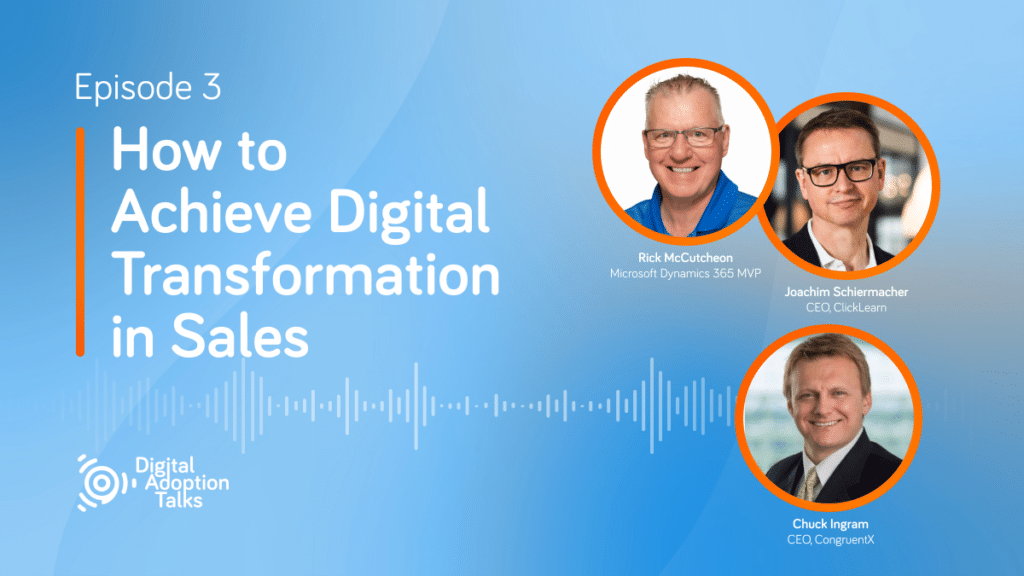You will hear about what you can do to adapt to the digital buying process while leveraging the advantages of the professional sales team. And learn about how to support user adoption to drive effectiveness – especially for the not-so-tech-savvy salespeople in your organisation.
In this episode of Digital Adoption Talks we are joined by congruentX CEO Chuck Ingram to a talk about digitalisation and sales professionals. Chuck is an expert in aligning people and their technology.
Chuck, Rick, and Joachim get into the digitalisation of the sales process and how it can be an obstacle for organisations, their salespeople, and the way they are set up to sell.
Chuck will also tell why ghosting is not always ghosting in a non-linear sales process and lay out 3 ways to keep focus on the client instead of the project.
You will hear about what you can do to adapt to the digital buying process while leveraging the advantages of the professional sales team. And learn about how to support user adoption to drive effectiveness – especially for the not-so-tech-savvy salespeople in your organisation.
